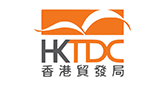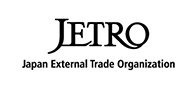Automobile Industry Market Research
Competitive Intelligence, Business Analysis, Forecasts, Market Size, Trends, Companies, Statistics
Available Data Services: Custom Research Projects, Database Subsription or PDF eBooks
PLUNKETT PROVIDES IN-DEPTH STATISTICS TABLES COVERING THE FOLLOWING INDUSTRY TOPICS:
-
Automobile Industry Statistics and Market Size Overview
-
General Motors Corporation Overview
-
General Motors Corporation Overview
-
Ford Motor Company Overview
-
Ford Motor Company Overview
-
Toyota Motor Corporation Overview
-
Volkswagen Group Overview
-
Toyota Motor Corporation Overview
-
Volkswagen Group Overview
-
Daimler AG Overview
-
Mercedes-Benz Group Overview
-
Honda Motor Co. Overview
-
Hyundai Motor Group Overview
-
Honda Motor Co. Overview
-
Hyundai Motor Group Overview
-
Licensed Drivers, Vehicle Registrations & Resident Population, U.S.: 1960-2022
-
U.S. New Car & Truck Market Shares by Company: 2018-2020
-
Highest Fuel Economy by Vehicle Class: 2024 Model Year
-
New Vehicle Sales by Vehicle Type, U.S.: 2009-2017
-
Highest Fuel Economy by Vehicle Class: 2021 Model Year
-
Lowest Fuel Economy by Vehicle Class: 2024 Model Year
-
Gross Output in the Motor Vehicles & Transportation Equipment Manufacturing Industries: Selected Years, 2017-2023
-
Lowest Fuel Economy by Vehicle Class: 2021 Model Year
-
Gross Output in the Motor Vehicles & Transportation Equipment Manufacturing Industries: Selected Years, 2013-2019
-
Personal Transportation Expenditures, U.S.: 2015-2023
-
Average Miles Per Gallon vs. Horsepower, U.S.: 1975-2023
-
Motor Vehicle Traffic Accidents in the U.S. by Type of Vehicle & Person: 2021-2012
-
Personal Transportation Expenditures, U.S.: 2013-2020
-
Average Miles Per Gallon vs. Horsepower, U.S.: 1975-2019
-
Value of Imports of Vehicles to the U.S.: 2017-2023
-
Automobile Driving Costs, U.S.: 2019
-
Value of Exports of U.S. Vehicles: 2018-2023
-
Occupational Employment and Wages for Automotive Service Technicians and Mechanics: May 2023
-
Employment in the Automobile Industry, U.S.: 2018 - June 2024
-
Highway Vehicle Miles Traveled, U.S., Monthly: January 1990-September 2015
-
Motor Vehicle Traffic Accidents in the U.S. by Type of Vehicle & Person: 2010-2019
-
International Retail Premium Gasoline Prices: May 1996-May 2017
-
Value of Exports of U.S. Vehicles: 2015-2nd Quarter 2021
-
Value of Imports of Vehicles to the U.S.: 2014-2nd Quarter 2020
-
Occupational Employment and Wages for Automotive Service Technicians and Mechanics: May 2020
-
Employment in the Automobile Industry, U.S.: 2014-May 2020
-
Licensed Drivers, Vehicle Registrations & Resident Population, U.S.: 1960-2018
-
Retail On-Highway Diesel vs. Regular Gasoline Prices, U.S.: January 1995-September 2019
Top Companies Profiled
The following is a partial listing for this industry. As a subscriber, you will have access to the leading companies and top growth companies. This includes publicly-held, private, subsidiary and joint venture companies, on a global basis as well as in the U.S.
Hundreds of Top Companies Profiled, Including:
PLUNKETT PROVIDES UNIQUE ANALYSIS OF THE FOLLOWING TRENDS THAT ARE DRIVING THIS INDUSTRY:
-
Automobile Industry Introduction
-
U.S. Auto Manufacturers Ford, Chrysler and GM Compete Head-On with Volkswagen, Toyota and Honda
-
The Coronavirus’ Effect on the Automobile Industry
-
U.S. Automobile Exports Soar
-
Electric Cars and Plug-in Hybrids (PHEVs) Enter the Market in Low Numbers
-
Hybrid Cars’ Market Share Falls
-
Major Research and Advancements in Lithium Batteries/Tesla and Panasonic Plan Gigafactory
-
Natural Gas-Powered Vehicles Gain in Popularity/Long Term Potential is Bright Thanks to Low Shale Gas Prices
-
Fuel Efficiency Continues to Improve/ Stiff MPG Standards Adopted in the U.S. (CAFE Rules) and Abroad
-
Clean Diesel Technology Faces Consumer and Regulatory Challenges/Volkswagen Faces Emissions Scandal
-
Ethanol Production Soared, But U.S. Federal Subsidy Expires
-
Cellulosic Ethanol Makes Slow Commercial Progress
-
Fuel Cell and Hydrogen Power Research Continues/Fuel Cell Cars Enter the Market
-
China Becomes the World’s Largest Auto Market but Growth Is Slowing
-
India Sees Automobile Export Growth
-
Outsourcing of Automobile Component Manufacturing/Design
-
Optimum Lean Production Saves Manufacturing Costs
-
Mexico Grows Rapidly as a Major Automotive Maker and Exporter
-
Focus on Safety Improvements by Automakers/Self-Driving Cars
-
Car-Sharing Programs (Short-Term Rentals), AKA Mobility Services, Proliferate
-
Wireless Information Systems Surge Ahead in Vehicles: Telematics, Intelligent Transportation (ITS) and Real-Time Traffic Information
-
Embedded LTE Wi-Fi and Onboard Apps Incorporated by Auto Makers in New Car Infotainment Systems
-
Small Cars Boosted by Green Consumers and MPG Regulations
-
Technology Drives Insurance Efficiencies/Policy Holders Allow Their Habits to be Tracked for Lower Insurance Rates
-
Uber and Didi Dominate the Car on Demand (Raid Hailing) Industry
-
Super-Expensive Cars Are Pushed by Manufacturers/Luxury Car Market Is Highly Competitive
-
Self-Driving, Autonomous Cars Receive Massive Investments in Research and Development Worldwide
-
Gig Economy and Self-Driving Cars Pose Insurance Challenges and Underwriting Opportunities
-
Trends in the Automobile and Car Industry in the Asia-Pacific Region, Including Key Markets of Thailand, Malaysia, Japan, Australia, South Korea and India.
-
Consumers Use Bike Sharing, Car Services Like Uber, Light Rail and Ride Sharing to a Growing Extent
Key Findings:
A complete market research report, including forecasts and market estimates, technologies analysis and developments at innovative firms within the Automobile Industry. Gain vital insights that can help shape strategy for business development, product development and investments.
Key Features:
- Business trends analysis
- In-depth industry overview
- Technology trends analysis
- Forecasts
- Spending, investment, and consumption discussions
- In-depth industry statistics and metrics
-
Industry employment numbers
Additional Key Features Include:
Industry Glossary
Industry Contacts list, including Professional Societies and Industry Associations
Profiles of industry-leading companies
- U.S. and Global Firms
- Publicly held, Private and Subsidiaries
- Executive Contacts
- Revenues
-
For Public Companies: Detailed Financial Summaries
-
Statistical Tables
Key Questions Answered Include:
- How is the industry evolving?
- How is the industry being shaped by new technologies?
- How is demand growing in emerging markets and mature economies?
- What is the size of the market now and in the future?
- What are the financial results of the leading companies?
- What are the names and titles of top executives?
-
What are the top companies and what are their revenues?
This feature-rich report covers competitive intelligence, market research and business analysis—everything you need to know about the Automobile Industry.
Plunkett Research Provides Unique Analysis of the Following Major Trends Affecting the Automobile Industry
-
Major Trends Affecting the Automobile Industry
-
Automobile Industry Introduction
-
U.S. Auto Manufacturers Ford, Stellantis and GM Compete Head-On with Foreign Manufacturers
-
U.S. Electric Vehicle (EV) Subsidies Expired in 2025/U.S. Auto Manufacturers Change Strategies
-
Electric Cars (EVs) and Plug-in Hybrids (PHEVs) Spur Changes at Auto Makers
-
Major Technology Research in Batteries/Major Investments in Battery Factories and Power Storage
-
Natural Gas-Powered Vehicles Gain in Popularity/Long Term Potential Is Bright Thanks to Low Shale Gas Prices
-
Fuel Efficiency Continues to Improve
-
Ethanol Production Is Massive for Fuel Additives
-
Cellulosic Ethanol Makes Slow Commercial Progress
-
Fuel Cell and Hydrogen Power Research Continue/Fuel Cell Cars Enter Market
-
China Is the World’s Largest Auto Market/ Becomes a Major Auto Exporter and EV Supply Chain Player
-
India Has a Significant Automobile Market, with Great Long-Term Potential
-
Mexico Is a Leading Automotive Maker and Exporter
-
Focus on Safety Improvements by Automakers
-
Wireless Information Systems Surge Ahead in Vehicles: Telematics, Intelligent Transportation (ITS) and Real-Time Traffic Information
-
Insurance Underwriting Uses Artificial Intelligence (AI)/Policy Holders Allow Their Habits to Be Tracked for Lower Insurance Rates
-
Uber, Lyft and Didi Dominate the Car on Demand (Ride Hailing) Industry
-
Self-Driving, Autonomous Cars Receive Massive Investments in Research and Development Worldwide
-
Gig Economy and Self-Driving Cars Pose Insurance Challenges and Underwriting Opportunities
Plunkett Research Provides In-Depth Tables for the Following Automobile Industry Statistics
-
Automobile Industry Statistics and Market Size Overview
-
General Motors Corporation Overview
-
Ford Motor Company Overview
-
Volkswagen Group Overview
-
Toyota Motor Corporation Overview
-
Mercedes-Benz Group Overview
-
Hyundai Motor Group Overview
-
Honda Motor Co. Overview
-
Licensed Drivers, Vehicle Registrations & Resident Population, U.S.: 1960-2023
-
Highest Fuel Economy by Vehicle Class: 2025 Model Year
-
Lowest Fuel Economy by Vehicle Class: 2025 Model Year
-
Gross Output in the Motor Vehicles & Transportation Equipment Manufacturing Industries: Selected Years, 2017-2023
-
Personal Transportation Expenditures, U.S.: 2016-2024
-
Average Miles Per Gallon vs. Horsepower, U.S.: 1975-2023
-
Motor Vehicle Traffic Accidents in the U.S. by Type of Vehicle & Person: 2023-2016
-
Value of Imports of Vehicles to the U.S.: 2018-2024
-
Value of Exports of U.S. Vehicles: 2019-2024
-
Occupational Employment and Wages for Automotive Service Technicians and Mechanics: May 2024
-
Employment in the Automobile Industry, U.S.: 2018 - 2024




















